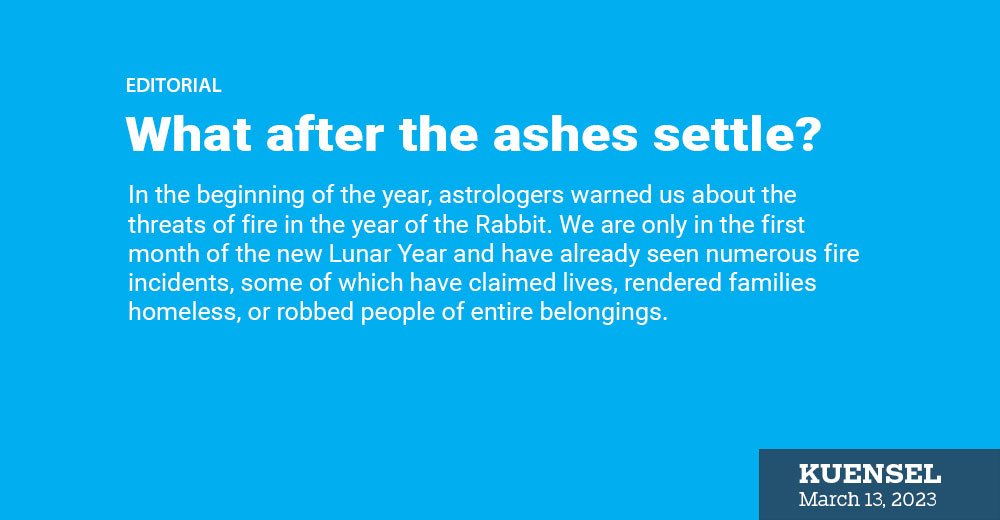In the beginning of the year, astrologers warned us about the threats of fire in the year of the Rabbit. We are only in the first month of the new Lunar Year and have already seen numerous fire incidents, some of which have claimed lives, rendered families homeless, or robbed people of entire belongings. In the wild, we have not counted the damage apart from the charred standing trees; the loss to diversity could be immense.
At this time of the year, we are prone to fire accidents. The dry and bristle surrounding, the start of the farming cycle, and the strong winds sweeping across valleys provide ready grounds for fire disasters. Human nature such carelessness, whether it is a child playing with matches, picnickers leaving fire extinguished, or faulty electrical connections at home, sparks fire.
It is the months of loss, February and March. In recovering from the tragic accidents, we should make the remaining year a year of awakening. The recent fire incidents came as cruel reminders that we are not prepared.
The response was overwhelming, both in fighting fires and the willingness to support the bereaved families. We have improved fire-fighting services in manpower, equipment and sense of volunteerism, but a fire in winter or wet months can be a challenge. The best yet is still being prepared and putting into action our plans if we have one.
Soon after the fire at Lungtenphu in Thimphu, everybody is double checking their vulnerability. This is good, but we forget it after the ashes settle.
There are several measures taken by the government. However, we seem to be able to do nothing about the obvious risks. Some are not subtle risks but blatant menaces that do not require great expertise to recognise. Like many policies, our approach to fire disasters are largely reactive.
A preventive approach is still the best approach. The Lungtenphu fire could have spread to the Changjiji clustered housing colony. It did, but timely intervention prevented it from turning into a furnace. Did Changjiji located on the banks of Thimphu have a fire hydrant or hydrants? The urban setting has changed. Given today’s trend the threat to towns could be more destructive than a forest fire.
As urbanization spreads its wings, this threat deserves attention. Our settlements are along the valleys where a river or stream flows by. What if a fire breaks out at the Olakha workshop area. There is a stream flowing by. Will we be able to use the stream or wait for fire trucks manoeuvering the busy Thimphu traffic?
Everybody is talking about the recent fire incident, the latest being the Shengana case in Punakha. We cannot predict disasters, but we can prevent. To start with, we need a clear preventive plan.
The Prime Minister who is in Germany, it was learnt, called local leaders to list down all the precautions and potential weak points that could trigger an accident. The list included checking transformers in the locality, standardising miniature circuit breakers (MCB), replacing faulty or spurious quality wirings and safety measures.
This is a good start. If fire is a threat, like the astrologer predicted, we need to know how to prevent it. Even talking about it is a good start.


